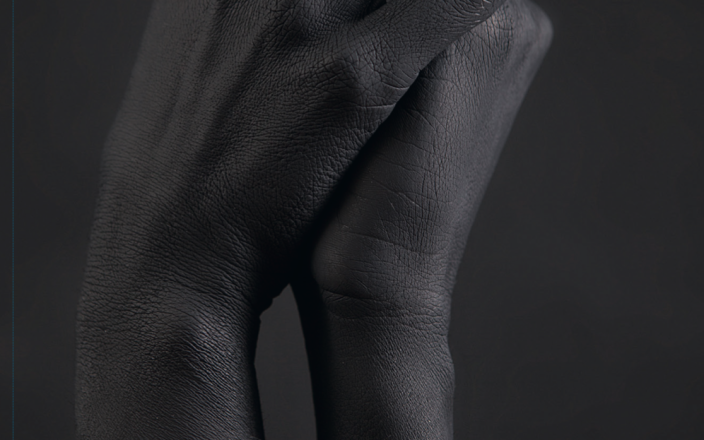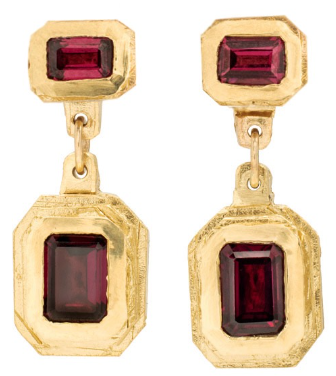I don’t think I’ve ever seen the diamond industry in such a quandary. There are currently many different factors impacting business being pulled from pillar to post. Let me give you a brief synopsis of what’s happening. I might miss out on some things when discussing geopolitical matters because the prospective changes depend on where you sit.
We highlight the many issues facing the industry, such as changes in India, Africa, Antwerp, the G7, and lab-grown diamonds, how this impacts jewellery retailers in Australia and the things they may want to consider. It becomes clear that we need a reset button to forge a path forward.
India & China: Industry Sanctions
India stands as a cornerstone in the diamond trade, being responsible for polishing 95 percent of the world’s diamonds—natural and lab-grown. A few months ago, the diamond industry was so concerned by the drop in wholesale prices that the top producers came together and unilaterally agreed to cease purchases of rough diamonds for three months. Clearly, if conducting business in a market where polished diamonds fetch lower values than their raw counterparts, they are burning through cash and reducing asset value. It’s bad business, wouldn’t you say?
India is not a part of the G7, so it’s not restricted by the sanctions on purchasing rough diamonds from Russia. However, the most significant market segment that is part of the G7 and has imposed sanctions on Russian diamond importation is the US. The US was previously the largest buyer of Russian goods because it was considered some of the finest materials. This impact now has massive ramifications for the Indian market, which relies heavily on sales to the US.
A market that is not affected by the sanctions enforced by the G7 is China. However, once the paramount growth market for several years, China has experienced a massive slowdown in its economic growth and overall consumption of luxury goods.
I recently attended a president’s meeting held in Shanghai. Opposite the hotel was a magnificent shopping complex, as good as any you would find anywhere in the world. It had all the big brand names, and yet there weren’t 200 people walking around. Extended periods of COVID-induced disruptions, massive drops in the real estate market and a stock market that has had approximately $7 trillion of value wiped from it since 2021 tell us that it will take time for this economy to bounce back.
On a positive note, I believe China can bounce back sooner than we think. The Chinese government can enact swift policy interventions, which could mean a quicker rebound time than in the West where policy intervention delays are expected.
Africa: Seizing Opportunities Amidst Adversity
Africa, the primary source of diamond production, stands at a pivotal juncture. With the diamond industry serving as a vital revenue stream for governments and entities like DeBeers, Africa holds the potential to leverage supply and demand dynamics to its advantage.
The continent sees the opportunity to enhance various areas of social wellbeing, including education, infrastructure, and overall quality of life, that other countries have been able to see as a result of the growth of its mining sector. Comparing it with Australia, which has a strong mining industry that has helped with the higher-than-average quality of life index, Africa could be looking to enjoy those same benefits. This current position of the diamond industry could be a godsend to Africa, should they grab another slice of the pie.
Africa has a great story to tell, its ability to mine and preserve nature while providing a better quality of life for its people. What better story to tell your customer where you source your diamond from? However, if Antwerp does not provide Africa exemption for its goods, or at least enable an independent entity to verify that all goods are from legitimate sources, it will have the opposite effect on Africa. Requiring diamonds to be sent first to Antwerp for verification before circulation would only make diamonds more expensive and reduce Africa’s competitive advantage enormously.
Let’s just be crystal clear that there is already a training process in place with the Kimberly Process (KP) certification, which goes a long way to address many of these concerns. One could have piggybacked this process and added a few more tools, and voilá, we have a workable solution. I believe the KP certification is due for a revamping and should transition to electronic issuance, removing the physical paper processing that is outdated and open to manipulation, which would further bolster the integrity of the certification process, and provide an immediate and pragmatic solution.
Antwerp: Navigating Changing Tides
Antwerp, historically renowned as a diamond trading hub, has lost so much of its diamond trade and position in the diamond industry worldwide. On a personal note, I was blown away to read a book that was over 500 years old, which spoke about the diamond industry in Antwerp and the rules governing it. I sat in their Diamond Museum and viewed the wonderful display of the tools and the methods employed centuries ago to polish diamonds.
The Antwerp World Diamond Centre (AWDC) is on a mission to revive Antwerp’s status as a leading player in the diamond industry. Its management team saw the current political turmoil of the G7 sanctions on Russian diamonds as an opportunity to rekindle their relevance in the diamond sector—at any cost.
Historically, Antwerp has been a crucial hub for the distribution of rough diamonds, with approximately 30 percent of the world’s supply originating from Russia and passing through Antwerp before reaching global markets. However, India and Dubai have taken this mantelpiece from Antwerp for multiple reasons. The most obvious are India’s cost-effective labour force and Dubai’s drive for technological advancement and implementation. Dubai is always looking to find simple solutions to trade, whilst Antwerp was and is caught up in its historical framework and drowned in red tape.
Antwerp has now presented itself to the G7 countries as the only location with the skills, technology and personnel to accurately determine whether diamonds, either rough or polished, originated in Russia or any other country in the world.
If we stop and look for a minute as to who makes up the G7—Canada, France, Germany, Italy, Japan, the UK, the US, and the EU. Diamond processing has never been a big industry in any of these countries, and the politicians who are representing the G7 with sanctions see a $85 billion diamond industry as nothing more than a rounding error when compared with fuel and grain. Therefore, when a country puts its hand up and says we have the expertise and all the solutions, everyone else says “Great, let them deal with it.”
In assessing Antwerp’s claims, it is important to recognise that unless a diamond can be traced all the way through to its GIA or Sarine certificate using blockchain, no one can guarantee its origin. GIA have completed the most comprehensive research studies which they presented at a lecture last year in Las Vegas debunking anyone’s claim that they could somehow tell you the origin of the diamond through an analysis of its molecular structure or trace elements found within the stone.
The Antwerp World Diamond Centre (AWDC) created what is referred to as a single node of verification. It would be like saying every grain produced from anywhere in the world must go through one single point for verification. This is preposterous and leads to a train collision. Imagine sending the wheat from America, China, Australia and everywhere else in the world to Antwerp to verify that it didn’t come from Russia.
In effect, the AWDC claims that no other country possesses the required expertise and resources to ensure Russian diamonds are not entering the pipeline. However, is overlooking the capabilities of India, China, and Dubai, to name only a few.
As I write, there is currently mayhem in customs offices all over the world with parcels of diamonds being stopped and requesting verification of sorts, which are almost impossible to provide, before they allow goods to move into the country. To say this is ridiculous and will lead to additional costs to an already strained industry is an understatement.
While AWDC’s efforts to position Antwerp as a hub for diamond verification are commendable, they make it clear that a more inclusive and practical approach that acknowledges the capabilities of other countries, like India, China and Dubai is necessary. Looking at all the challenges in this verification process is important to the sustainability and integrity of the global diamond trade.
Lab-grown Diamonds: Disruptive Forces and Future Prospects
It is no surprise that the price of lab-grown diamonds on a wholesale level has plummeted, but the market is now gradually stabilising. It was just a matter of time. Logic tells you that when you mass-produce something and everyone’s jumping on the bandwagon, it’s just a simple case of supply and demand. Today, you can buy a one-carat lab-grown for approximately $100 to $400 AUD, and we see the market is popular at one and a half to three carats in particular.
Retailers in general are working on very healthy margins higher than what they get for natural. Has the overall diamond market grown overall? The data says yes, but will the market truly go back to natural diamonds as the true symbol of love because of their rarity? That’s yet to be determined. I have listened to some exceptionally knowledgeable people who believe it will.
On a personal note, the term luxury is tied to a dollar figure. Luxury as a concept is something that most people aspire to. It’s what breeds ambition and the desire to acquire wealth. If we accept this premise, then you could conclude that ultimately, if I can’t look at a diamond and tell the difference, then the only way I can achieve my desire for luxury is in the perception of a natural diamond. Brand identifiable and synonymous with luxury help define the perception of natural diamonds.
So far Tiffany & Co., Van Cleef & Arpels, and Cartier have not introduced lab-grown diamonds into their collections. I wouldn’t be shocked if they chose a subset to test it. Millions of diamond rings look like a Tiffany ring, but interestingly you will rarely find a person who says their ring is from Tiffany’s. If it wasn’t, probably for fear of being caught out. Therefore, natural diamonds being sold through luxury brands will be able to maintain their market, but will they stick with diamonds as the primary stone? Maybe not. The question is, how will the non-branded retailer deal with this change?
Australian Jewellery Retailers: Embracing Ethical Imperatives
Australia is not part of the G7. However, could we be dragged into similar sanctions? We will likely be affected by this if we are searching for goods, and they are in other countries, and prices may change accordingly.
It’s clear to me that it’s not enough to just follow the trends but rather ask yourself, what are your strengths? What is your unique selling proposition? How do you want to be portrayed to your target market? One must define a strategic position that incorporates the goods you will sell and how you wish to be portrayed.
The Australian diamond jewellery retailer has pushed back on the discussion of ethically sourced goods and the provenance of its merchandise. They argue that “No one has ever asked me.” I challenge this approach. Those customers never came to you in the first place, or ever will in the future because none of your marketing or your strategic positioning of your story reflects that these things are a part of your brand identity.
I can guarantee there has been enough market research to tell us that these things are important, and if you and your team are not educated in this space, that’s okay. Just don’t be surprised if your business shrinks because you are not attracting the next generation of consumers. If every major jewellery brand in the world is incorporating this into its framework, you would be brave to discard it.
Towards a Reset: Navigating Uncertain Terrain
Whether, in the next year or so, the different players in the diamond pipeline find a compromise or not, the landscape is under immense pressure which could lead to more uncertainty, lack of consumer confidence and financial pain. For many, this is a fight for their very existence. For some, they just think it’s not their problem and for others, they think, what can one person do?
Well, an initiative from key industry bodies and the World Federation of Diamond Bourses (WFDB), has a call to action where your signature can make a difference.
Visit wfdb.com/industry-call-to-action to sign the petition and make your voice heard.
Maybe, somebody does need to push the reset button.

Trade well,
Rami Baron
President, Diamond Dealers Club Australia
rami@ddca.org.au


